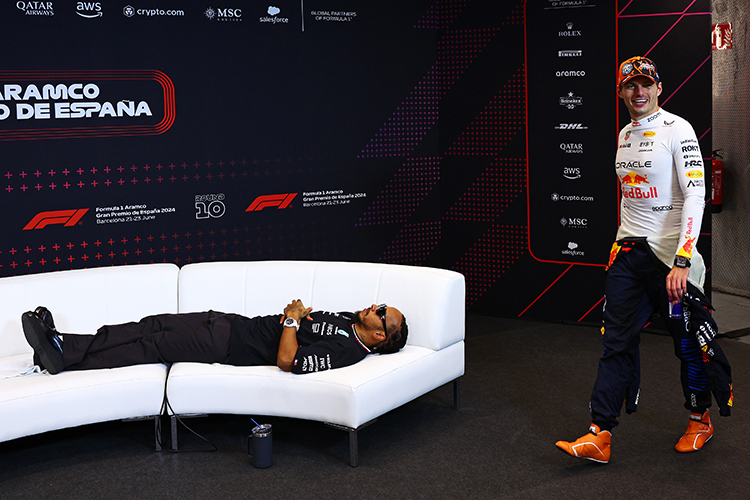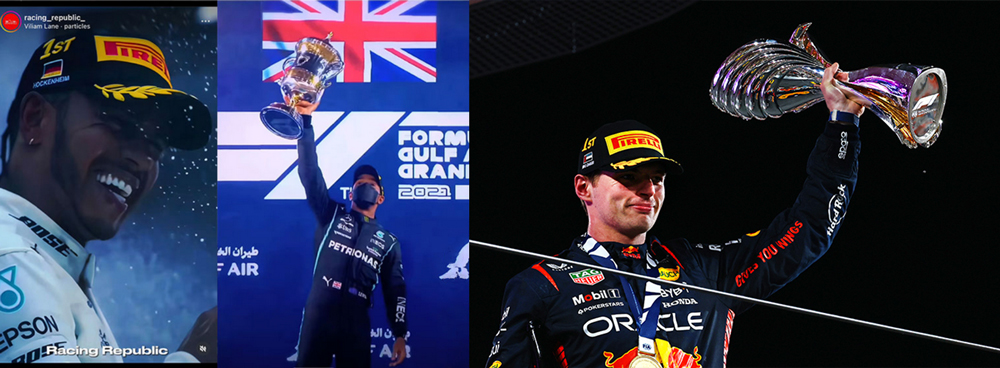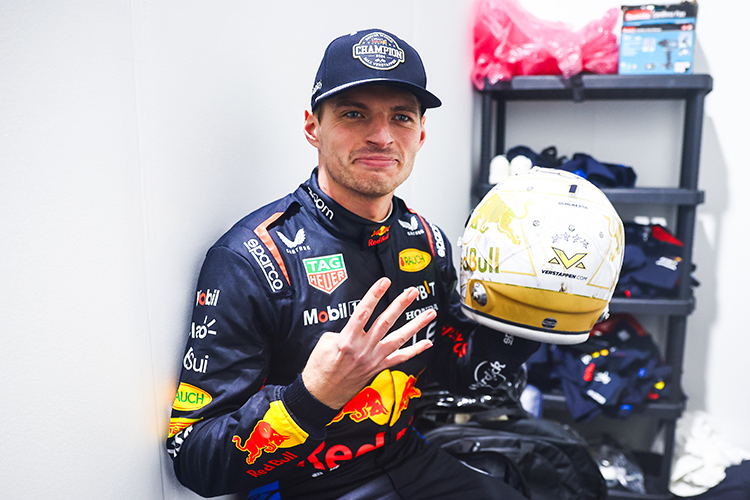The Rules of Formula 1: What Governs F1—and Why Those Rules Exist
The Rules of Formula 1: What Governs F1—and Why Those Rules Exist
Formula 1 likes to market itself as the pinnacle of motorsport—and it is—but what really holds the fastest show on earth together is paperwork. Thousands of pages of regulations decide how the cars are built, how the races are run, and how the money is spent. Those rules aren’t there to spoil fun; they’re there to keep F1 safe, competitive, sustainable, and spectacular.
Here’s your readable, no-nonsense tour of the major rules that shape F1—and why they matter.
The Rulebook, in Three Pillars
- Technical Regulations: What the car is. Dimensions, power units, aerodynamics, materials, safety structures.
- Sporting Regulations: How the weekend runs. Practice, qualifying, race procedures, points, penalties, pit stops, tires.
- Financial Regulations: How much teams can spend and how they test. The cost cap and aerodynamic testing limits.
Why these exist: safety (first, last, always), fairness (keep teams on the same planet), costs (stop spending wars), and spectacle (cars should race, not just qualify beautifully).
Technical Regulations: The Anatomy of a Legal F1 Car
1. Power Unit: The hybrid heart
- Spec: A 1.6-liter V6 turbo hybrid. Energy recovery systems harvest energy under braking (MGU-K) and from the turbo (MGU-H, set to be removed from 2026).
- Fuel and flow: There’s a limit on total race fuel and how quickly it can be used at any moment, balancing performance and efficiency. Sustainable fuels increase in importance, with a jump planned for 2026.
- Mode policing: Engine modes are regulated to prevent “qualifying-only party tricks” that skew competition.
Why it matters: Encourages innovation that road cars can actually use (efficiency, hybrid systems), controls costs, and keeps speeds in a manageable safety window.
2. Aerodynamics: Downforce with limits
- Ground effect era: Since 2022, cars generate more of their downforce from the floor rather than a spaghetti of wings and winglets. The goal is to reduce “dirty air,” so cars can follow closely.
- DRS compatibility: The rules shape the effect of the Drag Reduction System by defining rear-wing geometry and where it can be used.
- Flex and move: Bodywork can’t flex “too much.” Teams constantly push this gray area; the FIA uses load tests and footage to clamp down.
Why it matters: Aerodynamics is the biggest lap time driver and the biggest obstacle to racing. The rules try to balance speed with raceability.
3. Size, weight, materials
- Minimum weight and standardized components: Keeps an arms race at bay and ensures every car meets survivability targets.
- Exotic materials: Heavily restricted. You can’t build a car out of unobtanium.
- Active aero and driver aids: Banned (beyond DRS), including traction control and active suspension. The driver must make the difference, not software.
Why it matters: Limits costs, makes the playing field less lopsided, and keeps the sport about drivers as much as designers.
4. Safety structures and crashworthiness
- The halo: Mandatory since 2018; it has already saved multiple lives.
- Crash tests: Nose, side, rear, and rollover structures must pass brutal tests before the car is even allowed on track.
- Fuel cell and safety systems: Heavily regulated to prevent fires and explosions. Wheel tethers reduce wheels flying off in crashes.
Why it matters: F1 learns from every accident. Many current rules trace back to hard lessons, from the 1994 tragedies to modern hits that cars now routinely absorb.
5. Tires and brakes
- Single supplier: Pirelli provides all tires, with defined compounds and limits per weekend. No tire war equals lower costs and more predictable racing.
- Heat and blankets: Tires work in very tight temperature windows; tire warmers are still regulated rather than banned.
- Brakes: Carbon discs and pads are allowed, but dimensions and cooling are tightly controlled.
Why it matters: Tires decide strategy and overtaking opportunities. Standardization prevents chaos (and bills).
Financial Regulations: The Budget Reality Check
1. The cost cap
- The headline: Teams must build and race within a capped annual budget (with exceptions for driver salaries, top earners, marketing, and a few other line items).
- Enforcement: Audits, documentation, and penalties up to points deductions and exclusion. Think of it like F1’s financial fair play.
Why it matters: It stops the richest teams from winning by outspending everyone, gives smaller teams a fighting chance, and makes the grid healthier.
2. Aerodynamic Testing Restrictions (ATR)
- Sliding scale: The lower you finish in the championship, the more wind-tunnel and CFD time you get the following year; the champions get the least.
- Purpose: Controlled development pace, more chances for underdogs to catch up.
Why it matters: It subtly rubber-bands the field without artificial ballast or reverse grids—and rewards smart R&D.
Sporting Regulations: How a Grand Prix Actually Works
1. Weekend formats
- Standard weekends: One practice Friday, one on Saturday morning, qualifying on Saturday (Q1–Q3 knockout), race on Sunday.
- Sprint weekends: Practice and sprint qualifying on Friday, sprint race Saturday, then full qualifying later on Saturday, Grand Prix Sunday. The sprint is a standalone event with its own points.
- Rookie running: Teams must run a rookie in a couple of FP1 sessions per season.
Why it matters: Variety keeps the calendar fresh, and sprint points add jeopardy. Separating sprint results from the Grand Prix makes strategy cleaner.
2. Qualifying and the 107% rule
- Knockout: Q1 eliminates the slowest five, Q2 the next five, Q3 decides pole.
- 107% rule: Laps in Q1 must be within 107% of the fastest time, or the driver may need steward approval to race.
Why it matters: Ensures competitiveness and a fair, TV-friendly fight for pole.
3. Race distance and timing
- Distance: Most races are just over 305 km (Monaco shorter). There’s a hard time limit to avoid endless delays in bad weather.
- Points system: Top 10 score 25-18-15-12-10-8-6-4-2-1, with one extra for fastest lap (if you finish in the top 10).
- Shortened races: Tiered points awarded depending on how much of the race is completed under green; no full points for two laps behind a Safety Car anymore.
- Sprint points: Top eight score from 8 down to 1.
Why it matters: Predictable, meaningful scoring that rewards finishing—and keeps strategic risk-taking alive.
4. Tires and strategy rules
- Compounds: Three dry compounds nominated per event; teams must run at least two different dry compounds in a dry race.
- Wet weather: Intermediate and full wet tires available; Race Control can mandate starts behind the Safety Car in extreme conditions.
- Parc fermé: Once qualifying starts, car setup is largely locked. Major changes mean starting from the pit lane.
Why it matters: Forces teams to make bold setup choices, live with them, and think on their feet as conditions change.
5. Safety Car, Virtual Safety Car, and red flags
- Safety Car (SC): Neutralizes the race; cars queue up. Pit stops are allowed. Lapped cars may be let through to un-lap before restarts.
- Virtual Safety Car (VSC): Everyone slows to a prescribed delta; pit stops under VSC cost less time relative to rivals.
- Red flag: Race suspended; cars can be repaired in pit lane within constraints. Restarts can be standing or rolling.
Why it matters: Keeps drivers safe while preserving competitive integrity as best as possible. The SC/VSC calculus is a massive strategic lever.
6. DRS: Drag Reduction System
- Where and when: Activation zones are defined per track. If you’re within one second of the car ahead at the detection line, you can open your rear wing in the zone.
- Purpose: Overcoming aero wake to promote overtakes. Its power is tweaked via zone lengths.
Why it matters: It’s the “spice rack” for on-track action while the sport works on making cars race better in dirty air.
7. Track limits and racing etiquette
- Track limits: The white lines define the track. Repeated violations bring warnings, then time penalties.
- Overtaking: You must leave at least a car’s width when a rival is significantly alongside; weaving and late reactive moves in braking are penalized.
- Flags: Yellow (caution), double yellow (slow down, be prepared to stop), blue (let faster car through when being lapped), black-and-white (driving standards warning), black-and-orange “meatball” (mechanical issue), red (stop).
Why it matters: Clarity for drivers, fairness for opponents, and safety for everyone.
8. Pit lane rules
- Pit speed limit: Strictly enforced; speeding equals penalties.
- Pit stops: Equipment and personnel limits; unsafe release brings penalties.
- Fueling: No refueling during races—outlawed to cut fire risk and costs.
Why it matters: Pit stops are already balletic and dangerous at 2 seconds. Rules keep them fast but safe.
9. Power unit and gearbox allocations
- Component pools: Each driver has a limited number of ICEs, turbos, MGU-Ks, etc., and gearbox components for the season. Go over the limit and you get grid penalties.
- Reasonableness: The allotment is adjusted occasionally as calendars grow.
Why it matters: Punishes wasteful reliability while encouraging engineering durability.
10. Penalties, stewards, and appeals
- Who decides: Independent stewards, alongside Race Control, investigate incidents and hand out penalties—time, grid, drive-throughs, or disqualifications.
- Penalty points: Drivers accumulate license points for infringements; hit 12 within 12 months and you’re banned for a race.
- Protests and reviews: Teams can protest decisions and request a right of review with new, significant evidence.
Why it matters: A referee you can’t argue with isn’t sport; one you can argue with forever isn’t either. This system tries to sit in the middle.
Governance: Who Writes and Rewrites the Rules
- FIA: The regulator. Writes and enforces the rules, appoints stewards, runs scrutineering.
- F1 (the Commercial Rights Holder): Focuses on the show, calendar, and business side.
- Teams: Sit on commissions and working groups, vote on changes, and propose tweaks.
- Technical directives: Clarifications issued by the FIA to close loopholes mid-season (think limits on porpoising oscillations in 2022 or oil-burning crackdowns a few years back).
Why it matters: F1 evolves constantly. The rulebook isn’t a stone tablet; it’s a live document that reacts to discoveries, controversies, and safety findings.
How Rules Shape the Sport You Watch
- Strategy chess: Safety Cars, VSCs, and tire rules create strategic gambles. Pitting at the right time can flip a race.
- Engineering trade-offs: Aero versus cooling, straight-line speed versus tire wear, reliability versus peak power. Regulations force choices—not everything can be best.
- Driver craft: With traction control banned and overtaking rules codified, bravery and judgement matter. DRS opens doors; drivers still have to walk through them.
- Parity without sameness: The cost cap and ATR don’t homogenize the grid; they just stop runaway advantages from sticking forever.
- Safety that enables heroics: Halo, crash structures, and marshaling let drivers push the limits with confidence.
Classic Rule Moments and Why They Happened
- Refueling ban (2010): Cut fire risk and costs; shifted strategy from fuel to tires and pace.
- DRS introduction (2011): A response to aero wake making passes nearly impossible.
- Hybrid era (2014): Efficiency mandate; F1 as an R&D lab for energy recovery.
- Virtual Safety Car (2015): Born from the need to slow cars safely after tragic incidents.
- Ground-effect reboot (2022): Cleaner racing priority; simplified upper aero, bigger wheels, new floors.
- Cost cap (2021 onward): Protects competitive health and long-term sustainability.
- Sprint format (evolving since 2021): Adds meaningful mileage and points on more days.
- Points in shortened races (post-2021): No more full points for a parade; proportionate scoring tied to green-flag running.
The Grey Areas: Where Innovation Lives
- DAS (Dual-Axis Steering): Mercedes’ 2020 party trick for tire management—legal, then promptly outlawed.
- Blown diffusers, flexi-wings, brake-duct interpretations: Clever readings of airflow and material rules lead to protests, tests, and, often, new directives.
- Ride height and plank wear: Teams dance on a tightrope to keep the floor as low as possible without breaking wear limits—or their drivers’ backs.
Why that’s good: The rules are a test; the best engineers are those who ace the test creatively without cheating. That’s the F1 spirit.
Looking Ahead: The 2026 Reset and Beyond
- Power units: Simpler hybrids without the MGU-H, more powerful electrical component, and greater sustainable fuel content.
- Aerodynamics: Targeting lower drag and even better racing.
- Cost control: The cap stays; expect continued fine-tuning and tighter auditing.
- Sporting tweaks: Ongoing efforts to balance DRS reliance, manage track limits consistently, and keep sprint formats compelling.
The Big Picture: Why Rules Make F1 Better
- Safety gives permission for speed.
- Constraints breed creativity—F1’s genius is solving impossible problems within tight rules.
- Fairness keeps fans engaged; any team can dream big because runaway spending and loopholes get fenced in.
- Spectacle matters; regulations are increasingly written with raceability in mind, not just lap time.
So yes, F1 is the fastest bureaucracy on earth. But without this scaffolding, the show would be either too dangerous, too expensive, or too predictable. The rules don’t ruin F1—they’re the reason it works as sport, as engineering theater, and as a global obsession.
Up Next



